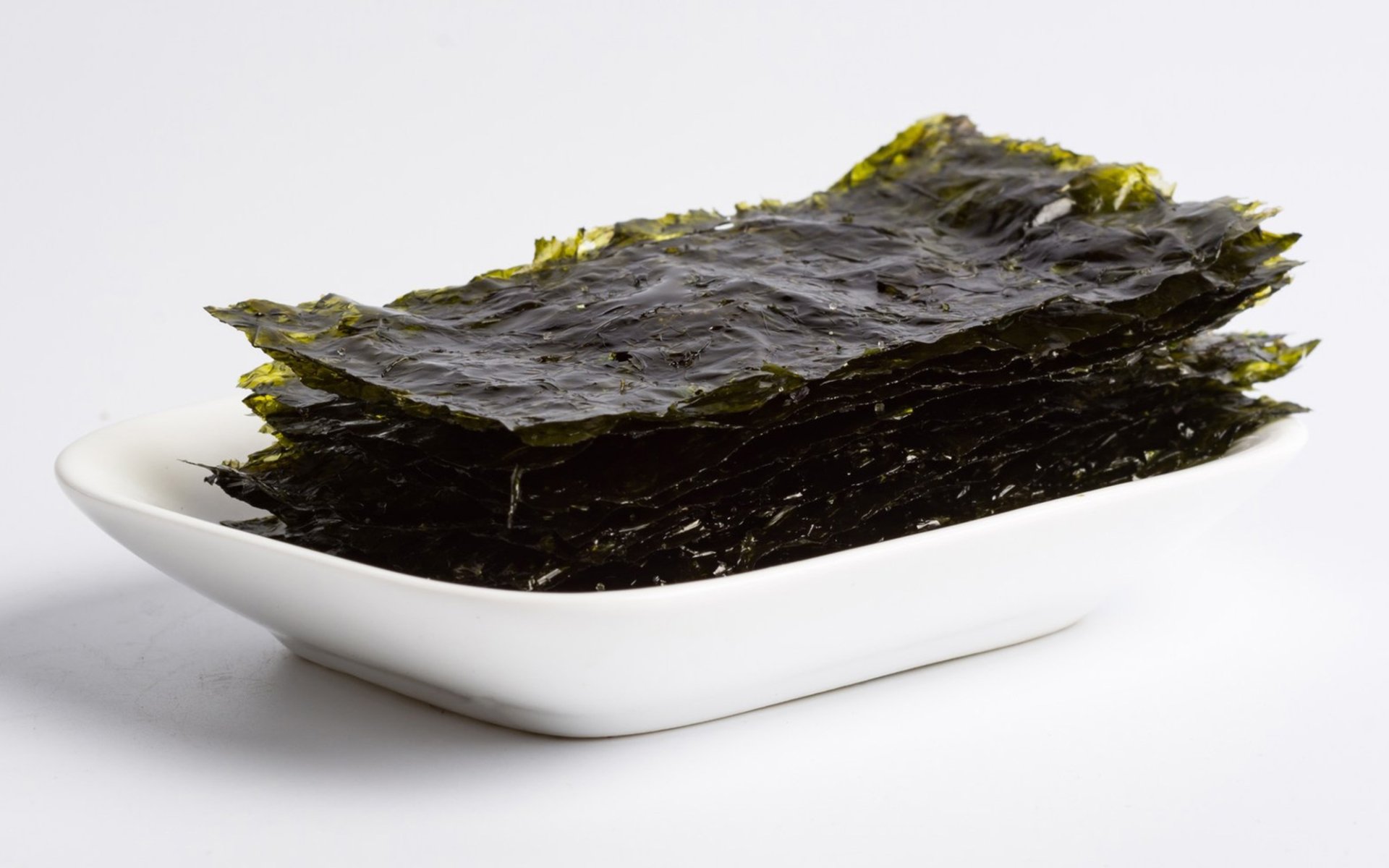Seaweed

In Japanese and Korean cultures, seaweed is a widely consumed staple, often served as a main side dish, with a history spanning many centuries. In Japan, seaweed is known as Kaiso (海藻), while in Korea, it is called Gim (김). The consumption of seaweed in Japan and Korea is a national characteristic deeply rooted since ancient times. Both countries are located near the sea, so most of their consumed food consists of seafood, and seaweed is one of the widely eaten items due to its high nutritional value.
Seaweed in Japan: Culinary Heritage and a Symbol of Good Fortune
Seaweed is a crucial ingredient in a variety of Japanese dishes. Its consumption in Japan dates back over 2,000 years, with its first recorded use found in ancient texts from the Nara period (710-794 AD). These texts mention that the coastal areas of Japan are fertile grounds, suitable for cultivating various seaweed species, including Nori, Kombu, and Wakame.
Recipes made from seaweed are also documented. Nori is commonly dried into thin sheets, used to wrap rice and as a base for sushi. Kombu, on the other hand, is a vital component in Dashi, a fundamental broth used in many Japanese stews and sauces. Wakame is a delicate and tender seaweed, often used in miso soup and seaweed salads.
Beyond its culinary importance, the Japanese also believe that seaweed symbolizes good luck and happiness. It is therefore commonly used as an ingredient in celebratory meals, festivals, and special occasions. The dark green color of seaweed also evokes vitality and growth, reflecting the deep-seated respect for nature in Japanese culture.
Seaweed in Korea: Nutritional Value and a Symbol of Maternal Love
Similarly, seaweed holds significant cultural importance in Korean cuisine. Koreans have long cultivated and consumed seaweed, recognizing its nutritional value and diverse uses. In Korea, there is a type of red seaweed called Pyropia, which is commonly dried and crisped, similar to Japanese Nori. It is then used to wrap Kimbap (김밥) (seaweed rice rolls), often referred to as Korean sushi, a traditional Korean dish.
Furthermore, seaweed is used as a seasoning and an ingredient in many other Korean dishes, particularly Miyeokguk (미역국), a seaweed soup that Koreans traditionally eat on birthdays and after childbirth. This is because seaweed offers various health benefits. Eating this soup on birthdays has become a cultural practice symbolizing a mother's love for her child, as often seen in many K-dramas where mothers prepare seaweed soup for their children's birthdays.
Seaweed in Korea also carries symbolic beliefs, similar to Japanese culture. Koreans believe that its green color evokes jade, a precious gemstone in Korean culture that signifies vitality and prosperity. It is therefore often incorporated into various dishes served at celebrations such as weddings and New Year's festivals.
Nutritional Value of Seaweed: A Healthy Food Source
In terms of nutritional value, seaweed is widely recognized for its numerous health benefits. It is rich in essential minerals such as iodine, calcium, potassium, and iron, as well as vitamins, antioxidants, and dietary fiber. It is low in calories and fat. Japanese and Koreans believe that regular consumption of seaweed helps improve thyroid function, supports cardiovascular health, boosts the immune system, and promotes healthy digestion.


